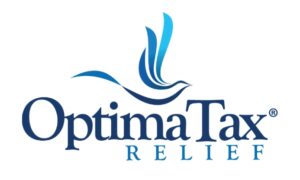Tax season is a time of anticipation for many Americans, especially those expecting a refund. The Internal Revenue Service (IRS) has streamlined the process to ensure timely refunds, but several factors can influence the speed at which you receive your money. Optima Tax Relief reviews how to check the status of your tax refund.
IRS Tax Refund Schedule and Processing Times
The IRS has established a general timeline for processing tax refunds. For electronically filed (e-filed) returns with direct deposit, refunds are typically issued within 21 days. Paper returns, however, may take up to a month to process. To expedite your refund, ensure your tax return is accurate and complete. Gather all necessary documents before filing and review your information carefully to avoid errors that could lead to delays. Creating an online account with the IRS can also facilitate faster processing, as it stores your personal tax information securely.
Impact of IRS Staffing on Refund Processing
Recent reports indicate that the IRS may lay off approximately 15,000 employees, potentially affecting the processing of tax returns and refunds. These layoffs could impact divisions responsible for taxpayer communication and basic audits. While the IRS has not confirmed these reports, it’s advisable to file your tax return early to minimize potential delays. Taxpayers can check the status of their federal refund using the “Where’s My Refund” tool on the IRS website, which requires your Social Security or ITIN number, filing status, and the exact refund amount.
Avoiding Common Pitfalls
To ensure a smooth refund process, avoid common mistakes such as incorrect Social Security numbers, mismatched income statements, or errors on tax forms. Identity theft concerns and claims involving specific credits or forms can also increase processing times. Tax preparer Paul Miller emphasizes the importance of preparation and accuracy in documentation to prevent errors.
Using the “Where’s My Refund” Tool
The IRS provides the “Where’s My Refund” online tool, allowing taxpayers to check the status of their refund. This tool provides updates on the processing stage of your return and the expected date of your refund. To use this tool, you’ll need your Social Security number or ITIN, filing status, and the exact refund amount as reported on your tax return. It’s important to note that the IRS updates this information once a day, so there’s no need to check multiple times a day.
Potential Delays and How to Avoid Them
Several factors can cause delays in receiving your tax refund. These include errors on your tax return, such as incorrect Social Security numbers or mismatched income statements, identity theft concerns, and claims involving specific credits or forms. To avoid these delays, ensure your tax return is accurate and complete. If you’re unsure about any aspect of your return, consider consulting a trusted tax professional. Additionally, be cautious of viral tax tips circulating on social media, as some may be misleading and could result in delays or penalties.
Conclusion
While the IRS has streamlined the tax refund process, several factors can influence the speed at which you receive your refund. By ensuring your tax return is accurate, filing early, and utilizing the “Where’s My Refund” tool, you can stay informed about the status of your refund and avoid common pitfalls that may cause delays. Remember, the IRS is a valuable resource, and consulting their official website or a trusted tax professional can provide guidance tailored to your specific situation.

































